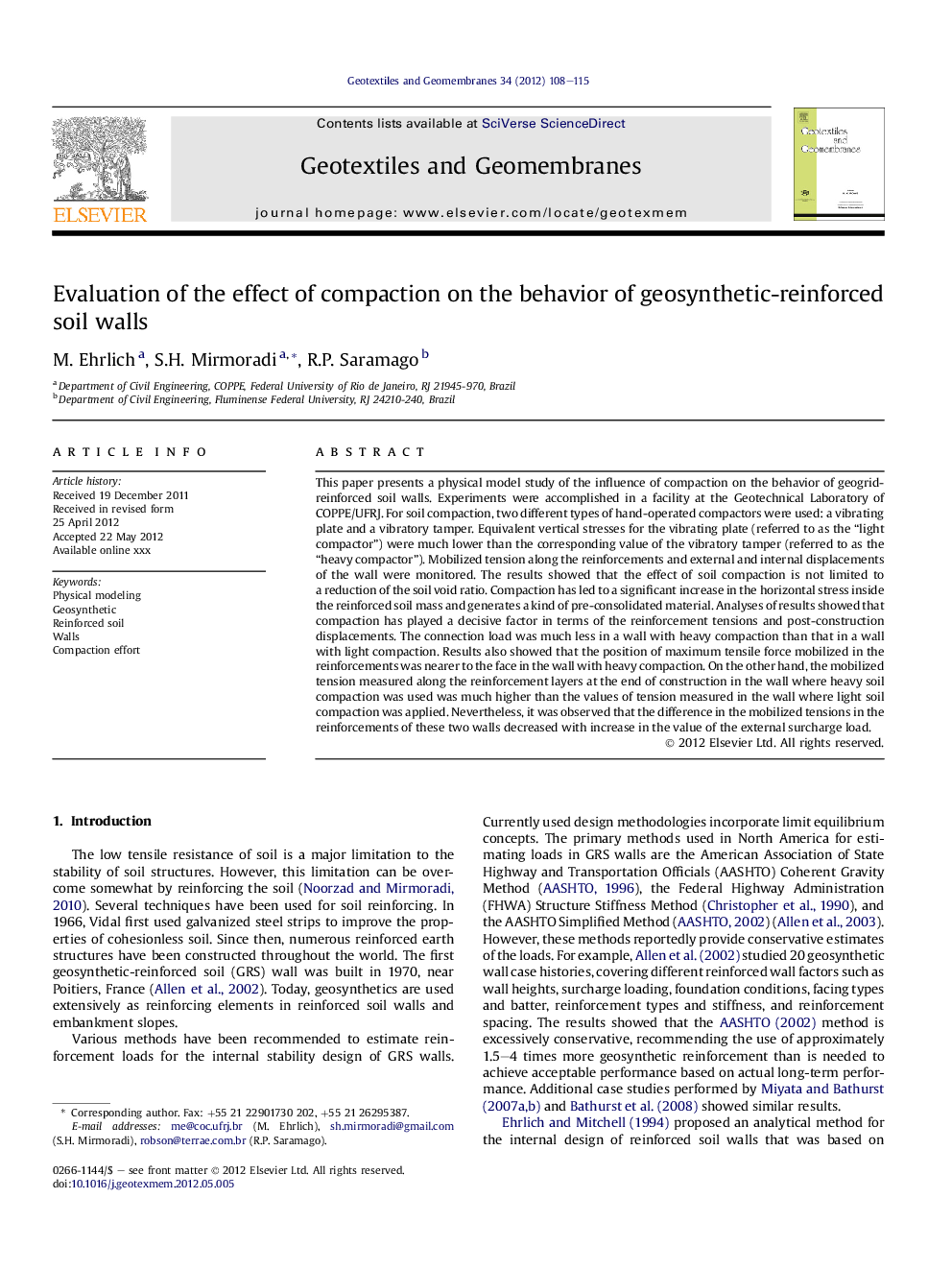| Article ID | Journal | Published Year | Pages | File Type |
|---|---|---|---|---|
| 274181 | Geotextiles and Geomembranes | 2012 | 8 Pages |
This paper presents a physical model study of the influence of compaction on the behavior of geogrid-reinforced soil walls. Experiments were accomplished in a facility at the Geotechnical Laboratory of COPPE/UFRJ. For soil compaction, two different types of hand-operated compactors were used: a vibrating plate and a vibratory tamper. Equivalent vertical stresses for the vibrating plate (referred to as the “light compactor”) were much lower than the corresponding value of the vibratory tamper (referred to as the “heavy compactor”). Mobilized tension along the reinforcements and external and internal displacements of the wall were monitored. The results showed that the effect of soil compaction is not limited to a reduction of the soil void ratio. Compaction has led to a significant increase in the horizontal stress inside the reinforced soil mass and generates a kind of pre-consolidated material. Analyses of results showed that compaction has played a decisive factor in terms of the reinforcement tensions and post-construction displacements. The connection load was much less in a wall with heavy compaction than that in a wall with light compaction. Results also showed that the position of maximum tensile force mobilized in the reinforcements was nearer to the face in the wall with heavy compaction. On the other hand, the mobilized tension measured along the reinforcement layers at the end of construction in the wall where heavy soil compaction was used was much higher than the values of tension measured in the wall where light soil compaction was applied. Nevertheless, it was observed that the difference in the mobilized tensions in the reinforcements of these two walls decreased with increase in the value of the external surcharge load.
